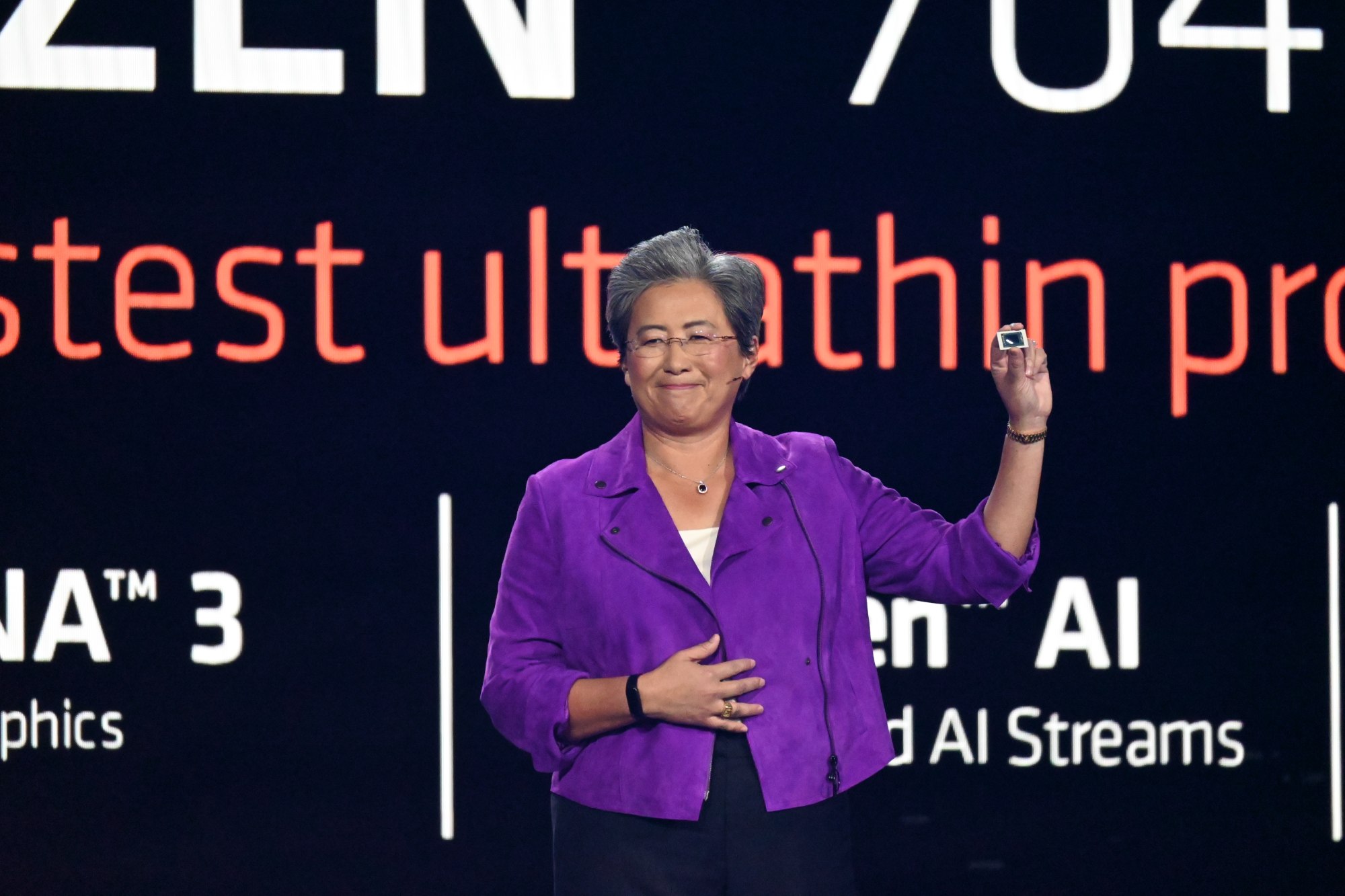
US blocks AMD from selling AI chip tailored for China without licence: sources
- The US company had hoped to get Washington’s approval to sell its less powerful MI309 processor to Chinese customers
- AMD had less of a foothold in the Chinese AI chip industry than Nvidia, but AMD is now going after the AI chip market more aggressively
US officials have told Advanced Micro Devices (AMD) that the artificial intelligence (AI) chip it tailored for the Chinese market is too powerful to sell without a licence, ensnaring another American semiconductor company in Washington’s crackdown on exports of advanced technologies.
AMD had hoped to gain a green light from the US Commerce Department to sell the AI processor to Chinese customers since it performs at a lower level than what the company sells outside China, according to people familiar with the situation, who asked not to be identified because the matter is private.
But US officials told AMD it must still obtain a licence from Commerce’s Bureau of Industry and Security to sell it, the people said.
AMD did not have a comment and it is unclear whether the company is seeking a licence. The Bureau of Industry and Security declined to comment. AMD shares were down 2.2 per cent as markets opened in New York on Tuesday.

California rival Nvidia has also been continually downgrading its powerful AI chips destined for China in an attempt to pass muster with US officials – and their ever-tightening restrictions on semiconductors – as Washington seeks to constrain one of its biggest geopolitical rivals.
The US has been working to limit Chinese access to cutting-edge semiconductors that can develop AI models – and the tools used to manufacture those chips – out of fear that Beijing will gain a military edge.
President Joe Biden’s administration unveiled an initial set of export controls in 2022 and strengthened them last October to include more technology and curb sales to intermediary nations that might undermine the ban.
The tighter controls restricted the sale of a processor that Nvidia had designed specifically for China – in compliance with the initial 2022 version of the export rules.
Nvidia has since developed new customised, less-powerful products for the Chinese market to align with the 2023 restrictions, and Commerce Secretary Gina Raimondo has said that she is looking into the specifics of those components.
The 2022 US ban prevented both Nvidia and AMD from selling their most powerful AI chips to China, forcing them to find workarounds. Nvidia immediately responded with a reduced-performance modified model, whereas AMD has not publicly discussed its efforts to develop a new AI processor for the country.
AMD had less of a foothold in the Chinese AI chip industry than Nvidia, which had a large share of that market before the ban. When the restrictions took effect in 2022, AMD said it did not expect to be materially affected by the rules.
Nvidia sampling alternative AI chips to China as US restrictions take a toll
But AMD is now going after the AI chip market more aggressively. In December, it launched a new MI300 line-up that will challenge processors from Nvidia.
The China-tailored product has been referred to as MI309, according to the people. It is not clear which Chinese customer was trying to buy the AMD AI chips. That factor could influence whether the company is able to secure a licence, should the chip maker choose to move forward.
Leading Chinese tech firms, including Tencent Holdings and Baidu, have said they have stockpiled enough powerful chips from Nvidia – the types that are now subject to US controls – to advance their chatbots’ capabilities for another year or two.
Meanwhile, Shenzhen-based Huawei Technologies is developing its own AI semiconductors and chip-making capability that could eventually help Chinese companies fill the gap created by the US ban.

